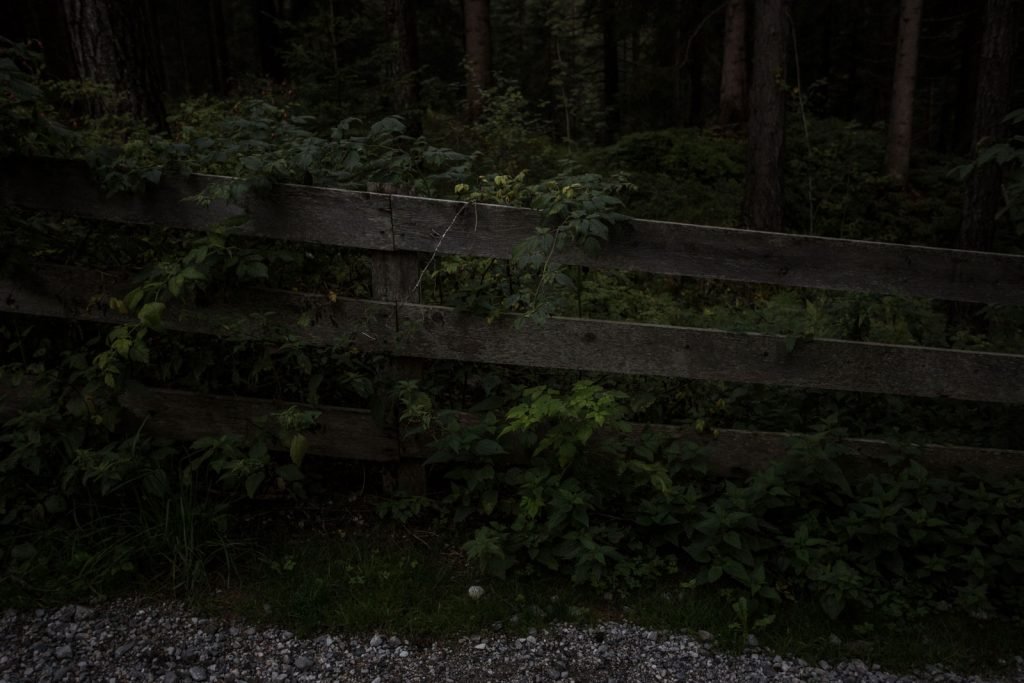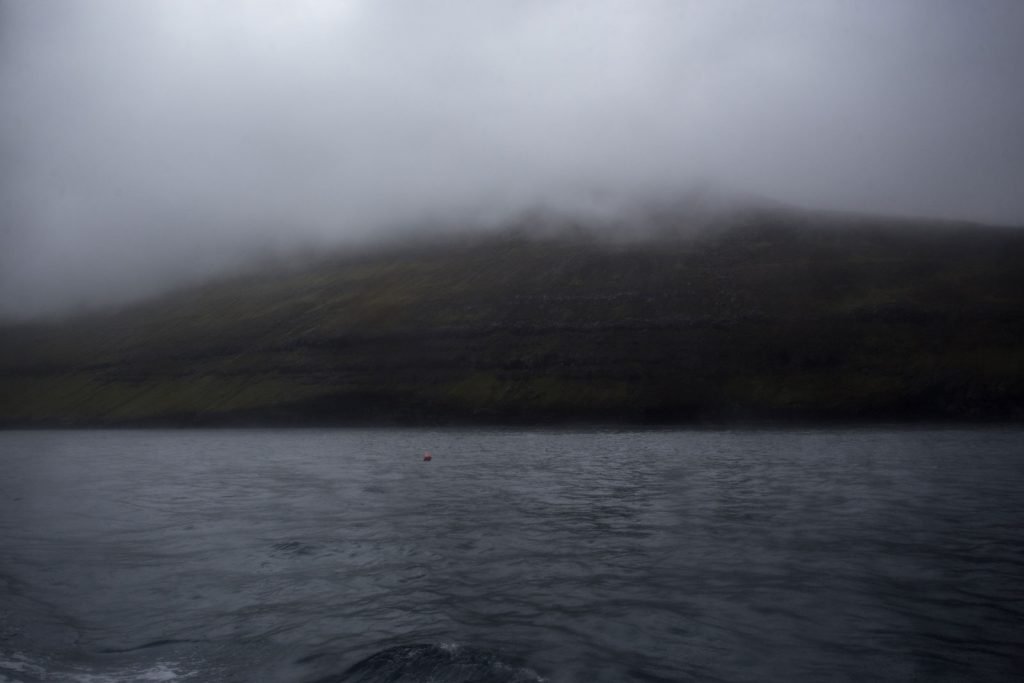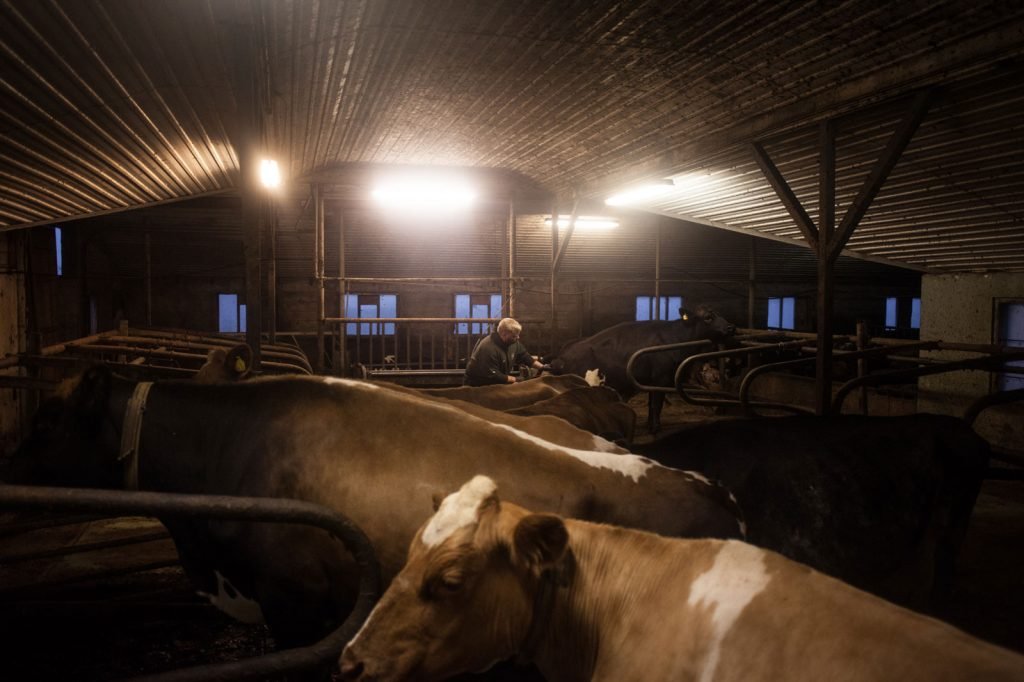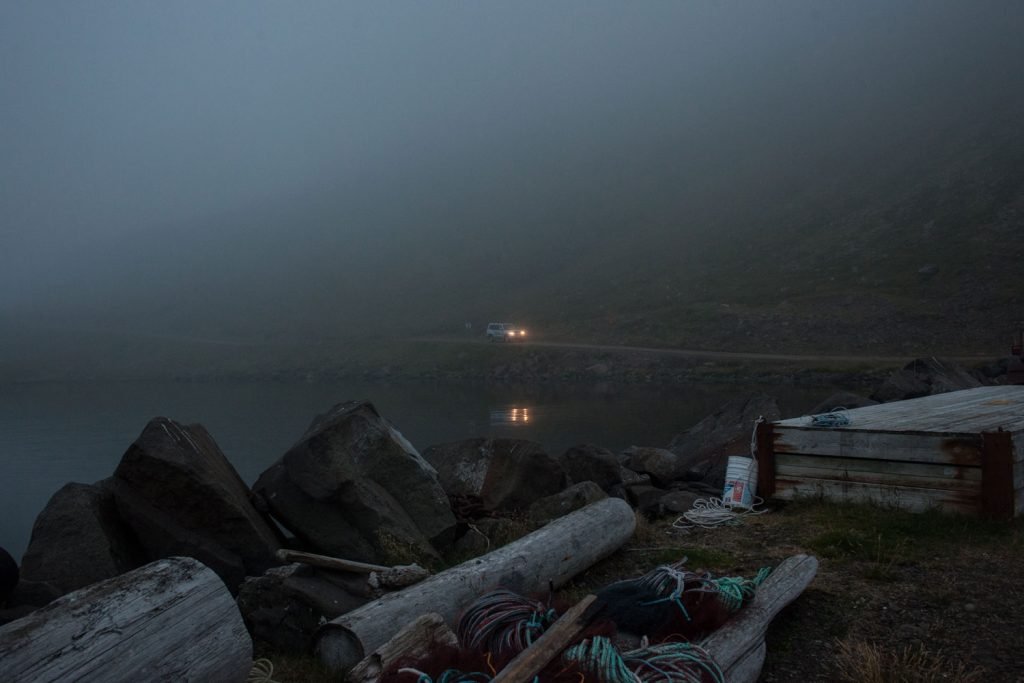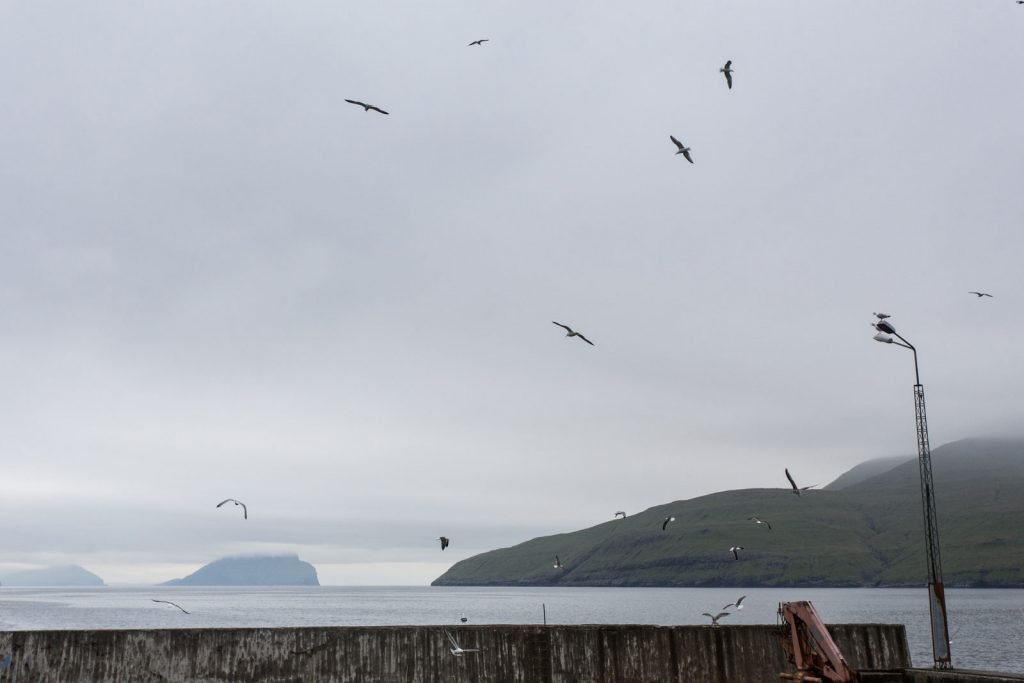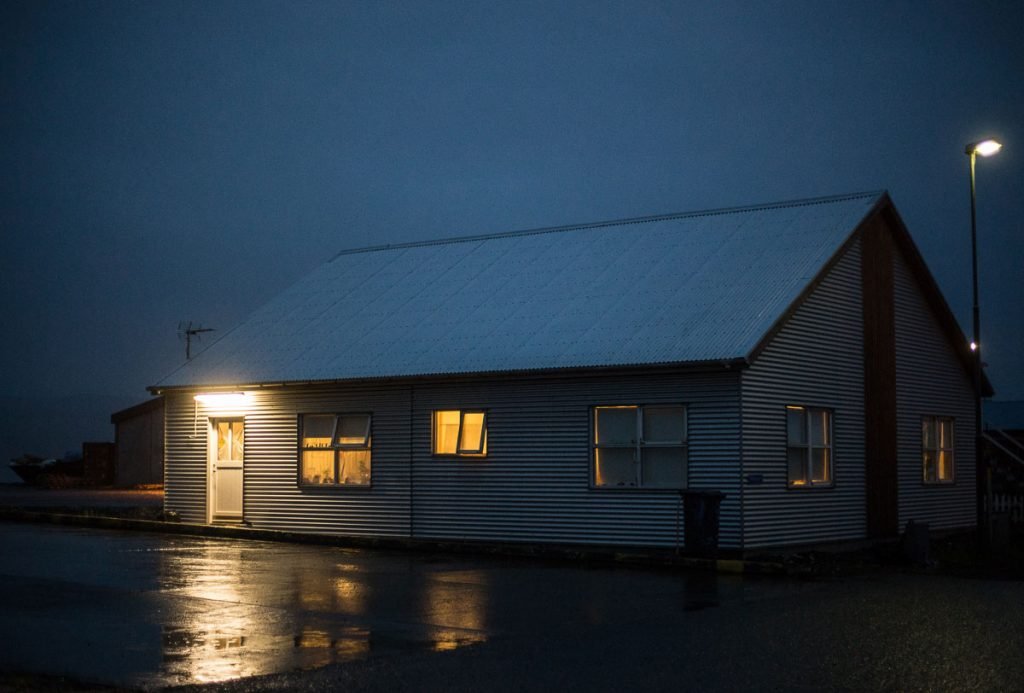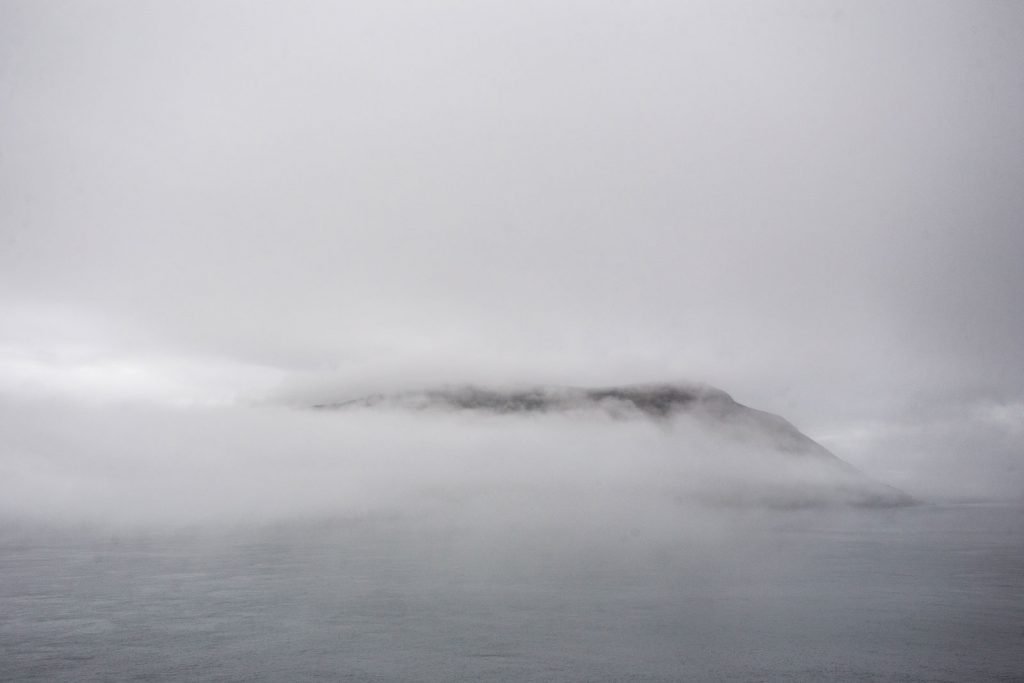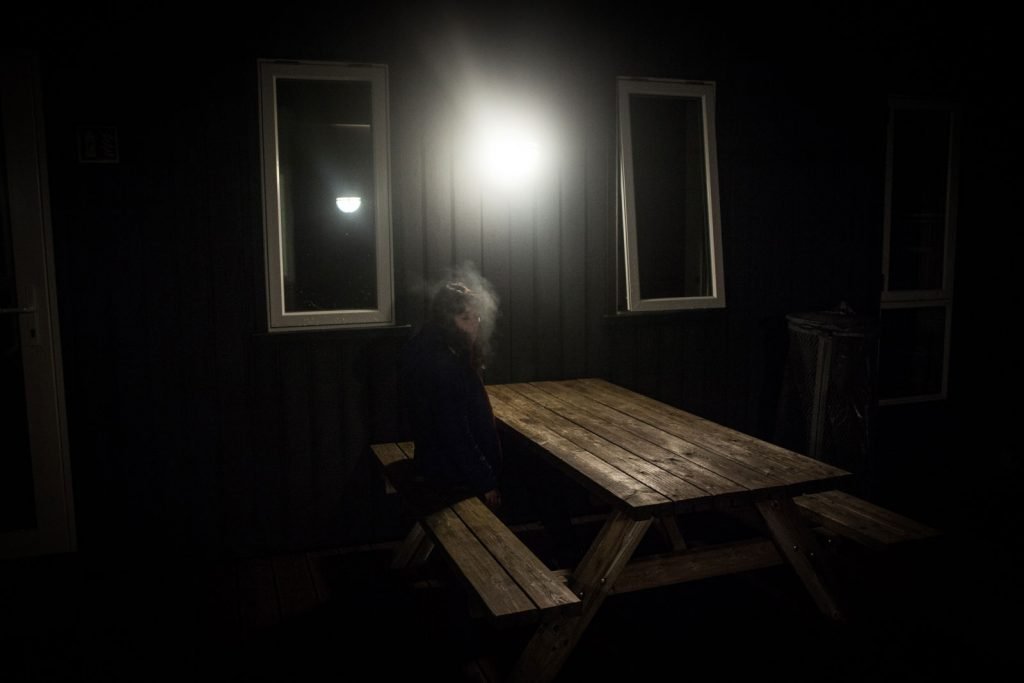Til norðurs
We share the curiosity and the desire to travel, to constantly discover new places, even better if “isolated” from the rest of the world. We often do not have time to return, that we are already there to plan our next trip. For us Iceland is the point of arrival, as if it were our place in the world, that place where one day we might even think to stop and maybe from there to continue to travel again.
We discovered it almost by chance. Andrea, who has always loved the mountains, decided to undertake this trip for the first time eight years ago. And he soon realized that there he would feel at home, in fact it was for all the other years to come. In Iceland I went there for the first time last year, after meeting Andrea, and it took only one day spent in that space of land to realize that it was a magical place, probably unique on the Planet. From there, Iceland has become a dream, the “place of the heart”. Its uncontaminated nature, wild landscapes, the few people that populate it and that feeling of loneliness are all things that make us love it even more.
Italy is very crowded, not to mention Rome. The streets are busy at all hours of the day, there are people running, never stopping for a moment. There is some beauty around, but nobody stops to observe it. A continuous coming and going of people, each focused on their own run. Supermarkets, pharmacies, cinemas are packed.
Once we found a tiny semi-deserted cinema, it seemed so rare, that we decided it would become “ours”. In this chaos, finding yourself is possible? Is it possible to stop for a moment, close your eyes and inhale pure air? Air that is not composed of smog? And from here, the idea of this journey: to get away from a reality that runs fast and distracted. To reach the mountains, the huts, the ocean, the expanses of nature, silence. Find yourself again, regain calm. Stop for a moment, feel one with the vast surrounding space. To observe. Driving for kilometers by car, with the risk of not meeting anyone, but despite this, do not feel alone. Reaching places that seem to have survived the globalization of the planet, where nature and the light of day are to mark the daily rhythms. Where one returns to the stables to milk the cows, and to work the land for sowing grass for the winter.
And it is above all the life on the farm that allows you to establish a direct relationship with nature: there are no breaks, the lambs can decide to be born even during the holidays and “every day is the same, but two days are never the same”.
And then, again, the road. The road, with the songs of the Sigur Ros in the background and watching, you think there is not a more beautiful place in the world than what is outside the window. A place where you can feel at peace. Where you are never tired before so much beauty. It almost moves you. And loneliness does not disturb you, on the contrary, it makes you full. Nature takes care of it. Because, sometimes, one feels alone in the midst of confusion, not the other way around.
These are all the feelings that we would like to enclose in a book, to share with someone all this great beauty. Of course, there are places that you must necessarily observe with your eyes, smells that you must personally feel, like that of freshly cut grass in the early morning, places you have to experience firsthand. But we would like to try to share this trip with you, we want you to travel through our eyes. From here, the idea of activating crowdfunding was born. Crowdfunding was born exclusively for the purpose of creating our book. It provided various rewards (photographic obviously), from a poster to the fine art print of one of our photos, to a copy of the book. For us, it was also a way to sell our photographs, in a cultural context where it becomes increasingly difficult to do so. You no longer think about a photo print, often to look at a picture just connect on social media. There is almost no longer the interest of owning an artisanal print, of feeling it in your hands, of hanging it in your own home. We wanted to try to get involved in this point of view and from here comes our crowdfunding, which slowly reached more and more people and we can not but be happy. In addition, we have specially created an internet site for this project: www.tilnordurs.com, where there is our exclusive travel blog. Exclusive because we have shared, step by step, stories, photographs and videos, not present on any other social. The blog is protected by a password, which was possible to get through our crowdfunding on Produzioni dal Basso: in fact, exclusive access to the blog was one reward specifically designed to directly involve interested people.
We also used our Instagram channels (andrea_rov and linda_pez), but especially to share the photographs needed by our sponsors travel:
The people’s poncho: multiuse quality rain poncho’s
Jeckybeng: urban outdoor brand producing limited
Abiuno: waxed canvas baga
Nordisk: high-performance tents
Disappear sewings: wilderness backpack
And finally, after months of planning, on 28th July we started towards the North (the name of our journey comes from here: Til Norðurs, which means “towards the North”). To the north, because the first two days of travel we did not follow a specific route, we only knew that on the morning we had to be at the port of Hirtshals, in Denmark, to get on the ferry that would take us to the Faroe Islands.
This has been, from the beginning, the philosophy of our journey: nothing planned well in advance, if not the obligatory stages that eventually were reduced to ferry journeys and little more. Beyond this, we were sure to avoid the large cities along the way, leaving space for small villages and villages and completely unspoiled places. We left Rome with 37 degrees, our jeep packed with packages and suitcases. We checked the car over and over again. “Did you take the pots? And the backpacks? And the containers? “And in the end, we left. Windows lifted up, air conditioning a thousand inside the car. Traffic. The queues. The heat that caused a slight apathy, because we knew that the first part of the trip would be boring. A yawn. Fast stop. The motorway restaurants overflowing with people. “I have to go to the bathroom.” Five minutes later, back in the car. “Let’s try another, maybe it’s less crowded.”
The cars that ran and surpassed us quickly. “I wonder why people are always in a hurry!” We drove calmly, without haste, the road was long and the sun almost relaxed us. We arrived in Ferrara at 16 in the afternoon, the sun was very strong.
From here, we have a highway. On our right and left, the desolate fields. It almost looked like one of those movies where you expect something disturbing to happen at any moment. Nothing moved, nobody seemed to breathe. Around 19 we were in Bolzano, with 27 degrees and the first drizzle. With our hands out of the windows, we were trying to catch the wind. We began to see the mountains, the sky was leaden. Around us, the fields with horses and cows. We had arrived in Austria.
We spent the first night in Krinz, in a wooden hotel, at the top of an old dirt road, among old photographs and stories of the owner’s family. On the morning of the 29th, we left early. Around us, only mountains. Without realizing it, we had already crossed the border to Germany. Sun, so hot, so many tails and construction sites under construction; the road seemed to stretch. Around us many wind turbines, some buildings. An almost boring day. The second night we stopped 45 minutes from the south of Hamburg, in a small village, Bad Fallingbostel: it was beautiful. He seemed to have emerged from the story of Hansel and Gretel and the little houses looked like they were made of marzipan.
On the morning of the morning at 9.00 o’clock, we left again; we had to reach Hirtshals in the day, to be able to embark at the time of the Faroe, the next day. We have passed Hamburg, other queues and other heat. On the navigator, the arrival time always moved a few minutes. “I can not wait to be in Denmark!” Then again fields and wind turbines. “I do not think I’ve ever seen so many in my life.” Each country has its own characteristic, Germany is characterized by these windmills.
Every time we see one we will think about this, surely. Here is another queue. At the bottom of a little man dressed in yellow. A wave with his hand and here is Denmark.
For the second time, we almost did not realize we had crossed the border. The happiness to be in Denmark was so great at that time: we were over half of our journey. Here too many from wind turbines, but they all moved fast. The fields were full of hay bales and the grass looked freshly cut. They began to see the houses with the low roof, long and square.
At 5:30 pm we were in Hirtshals, in front of a marvelous spectacle: the sun stood still above the transparent water, of a splendid cobalt blue.
Who took a bath, those who enjoyed the view, those who walked along the shore:
there was no chaos, only the noise of the North Sea. A little further on, a white and red lighthouse. It looked like a Lego construction.
We stayed for hours watching the Sea, at 9:30 pm it was still day.
We boarded Hirtshals on the morning of the 31st, with sudden heat and a long line of cars, motorbikes, and people. The departure was scheduled at 11:30 but you had to be at the port at least two hours before for check-in. Even before we left, we knew that the sea trip would be one of our favorite things. The cabin with the carpet of the Wes Anderson film hotels, the wood of the freighters’ ships looking for a treasure, the portholes where you can stick your nose, the pier where you have to be careful not to fly away.
More than a ship, it looked like a hotel on the water. There was a sauna, a swimming pool, hot pots on the pier, three restaurants, a supermarket, slot machines, a cinema. The best thing was the windows: there was not a room, even the smallest, that did not have one. Andrea and I went straight to the pier. We see the ship moving slowly from the port … until you get where everywhere you turn, you see only water.
And, accompanied by the legend of the sirens and the waves, on the 2nd afternoon we arrived in Tórshavn, the smallest capital in the world. In front of us, the incredible Faroe Islands.
One day, a gentleman with a white beard and white hair, tall enough and called by somebody the painter of the world, decided that his work was almost over. During the final touches to that sort of spherical masterpiece, while he was cleaning all the brushes used to color even the most absurd parts of this story, he dropped a drop of green in the middle of the cobalt blue marked just before with the Atlantic world; right there, between those two post-it put just before written with Greenland and the British Isles. Who knows how those names came to him? Where did he get them from? However, returning to our painting … as soon as that drop of green fell, just before putting only the signature to his work, he got angry and threw his brush to the floor exclaiming strange words that we here, however, we decided to translate with: “Porca scoop!”, “Oh hell! “And” For dindirindina “. Then, instead … after calming down, he poured some wine into a glass beaker and watched what he had done. After a few moments of strange confusion, interrupted by thoughts, scratching his head, thoughts and scratching his beard … he put down his glass of wine and suddenly took a pen in his hand and in a small post-it decided to write it over: Faroe Islands.
He smiled. At that moment he smiled a lot. That his (in) volunteer masterpiece was not finished. Somewhere amid the brushes, sheets, and micro-mines, there must have been the recently used pencil sharpener. He moved the compass, the ruler, the watercolors and the tin of black paint used to make the night. And then here it is, he finally found it! “Yes” … He exclaimed. He was under two models made with the pitch of two strange beings with written nearby: man and woman. He took the pencil sharpener, emptied it over his hand and then made a good puff and “Puff”, a cloud, a mist, a mist fell over those islands. That to look good you had to go inside because staying distant makes you be distant. And that going there instead leaves you breathless. And he smiled. At that moment he smiled a lot. He picked up his glass of wine, turned it in his hands and began to sip it a little at a time. They are very small, they are in the middle of the blue, who knows where they are so small that they are barely visible in that design, they have a strange shape, a name difficult to write and even more to pronounce. I am a poem. To see, the one that takes you and leaves you speechless. And he smiled. At that moment he smiled a lot. That painter of the world, that white-bearded man with white hair, that day he began to clean the brushes and to whistle a nice little tune … he was in a good mood.
The Faroes are tiny. Think of the time you would drive from Palermo to Milan or vice versa. At Faroe, you reach the most extreme north from the south, in an hour and no more. We loved them. In many ways, they reminded us of Iceland: the roads, the mountains, the landscapes, the farms. But the sense of loneliness is even more amplified, because if it is true that in Iceland you can drive for hours without meeting anyone, in Faroe there are many less inhabitants and many less tourists.
The availability of people is something incredible, certainly because they are not submerged by mass tourism, by foreigners who arrive curious on the other side of the world. We met fish and bird fishermen and captains of ships from Gronelandia.
We have seen villages with only three houses and three people. We climbed the highest mountain of the Faroe Islands, the Slættaratindur, coming from Funningur, the first village discovered on these islands by the Vikings. The cold was pungent and went into the bones. The wind was strong and pushed us back, almost trying not to make us reach the top. We turned them all, from North to South, from East to West.
The island of Streymoy or “island of the currents”, the largest of the Faroes where we fell in love with Tjørnuvík, Leynar, and Saksun, a tiny village north of the island, consisting of a few houses with grassy roofs, surrounded by a natural fjord, from the beach and the mountain;
the island of Vágar, the most western of the world, where there is Gásadalur, the most remote place in the most remote place in Europe; the island of Eysturoy, literally “island of the east”, the second of the Faroes, both for that population where the inhabitants of Gjóvv and Funningur made us feel at home; the island of Borðoy, the easternmost of the Faroes, with Klaksvík which is the fishing capital; the island of Kunoy, literally “the island of women”, with altogether 138 inhabitants; the island of Viðoy, the northernmost and most uninhabited. Literally “wood island”, despite the presence of trees on the island. The name refers to the dry wood that is floating from Siberia and North America; the island of Mykines, the westernmost of the Faroes, with only one country: Mykines, from which the island takes its name. Only about 15 people live there permanently, there are 40 houses, but only 6 are inhabited all year round. In the past, Mykines was one of the largest settlements in the Faroe Islands (around 170 people lived there in 1940); the island of Sandoy, south of the island of Streymoy, reachable only by boat. You can never know if you will leave and return at the appointed time, because of the weather; With the ship, we went from the Svínoy islands, “the island of pigs”, where there is only one village (Svinoy) with 29 inhabitants, and Fugloy, “island of birds”. It takes its name from a large amount of bird species that nest on the cliffs of the island.
On the afternoon of 8 August, we boarded the ship for Iceland. On 9 August at 7.00 am, after 13 hours suspended on the water, we see a mountain with atop ice sheets, in the middle a little green, at the foot a tiny white house: Iceland. There was fog, from a cloud came two cones of light that made the water golden and cold, what you expect before a snowfall. But the light was marvelous, it was the light that you saw as you thought you could not see it anywhere else in the world: it seemed that Iceland wanted to tell us her “welcome home”.
The ship left us at Seyðisfjörður, where queues of cars had already formed on the streets. Many, perhaps too many tourists, unlike the Faroes. We leave immediately to Husavik, towards the farm. The windows of the car were lowered, the sound of wind was heard, and the mountains began to look around. And the road, the Icelandic side with the yellow stakes to mark how high the snow is in winter, a road we have photographed so many times. We felt a feeling of well-being, pleasant, we were relaxed. We were where we must be. After two and a half hours we were in Myvatn, there was what looked like fog, but it was actually the hot smoke coming out of the Earth.
We went in between, we do it every time. From here, the journey to the farm was short. We arrive in front of an all-blue sign with a map that looks like a map for a treasure hunt with names that are difficult to pronounce: Reykjahlid, Laugar, they begin to see the bales of hay, the cows that graze in the fields. We pass in front of other blue houses and every time, it seems that the farm is that, but not yet. Impatience. We arrive at the last crossroads, turn left and find it in front of us: the barn at the back, white and blue and the House on the side. Coming down from the car seems to breathe a different air, it seems to be in Iceland yes, but in a still different place, as if we had found a small treasure somewhere, pristine and protected from the outside world. We immediately see Ary, Freydis, Nathalia and Andri, the hug seems to last for hours. They did not expect our arrival today, it was a surprise. They are very happy. It’s nice to go back to Iceland for this too: you know there’s someone waiting for you, you know that somehow you come home. Freydis tells us “Heima!”. Yes, we are at home.
In the evening, after a dinner together, we decide to go around. The sky is blue, except in a single point where it is covered by low clouds that caress the valley and it is strange: usually towards Husavik there is almost never fog. We approach and it seems to be inside Twin Peaks, all is silent, there are only the street lamps lit and we are overwhelmed by the fog. From a height we remain silently staring at the lights below.
It’s amazing how you can see Iceland so many times and every time it’s like it was the first one. The morning at 5 seems full day, seem our 11 Italian. In this period the sun almost never sets completely, at most a couple of hours. We wake up the sun coming in from the windows, it’s a beautiful day and it’s hot. At the farm life flows following only two specific times: at 7 in the morning and at 6 pm in the barn to milk the cows and feed the animals.
Time, Nature and above all animals decide the rest. There are no set times, everything can vary: a cow can decide to give birth at one o’clock in the morning or at five in the morning. Man can only adapt. And so it was also this time. Ary tells us that a cow has to give birth, but we do not know when it will happen and, in case, how long it will take. He has a bubble of placenta that has already leaked, Ary tries to break it, to facilitate the delivery. You have to keep up with her. The cow does not very much agree, but in the end, yields. Man and animals work closely together, trying to respect each other’s needs. We return to the house, we will return to check it in the evening. In the house you walk barefoot, the shoes are left outside the door. At the entrance are hung many sweaters, of all colors, handmade by Freydis with Icelandic wool. The wall is full of photographs, especially family portraits.
Respect for values and traditions is strong here. In the evening, for example, it is right to sit down at the table with your family at the end of the day. On the wall, behind the table, on a blackboard a chalk writing reads “No phone on the table, please :-)”. At the table we talk, we laugh, we do not remain silent for a moment.
This is also Home for this. Breathe the air of those who never go too fast for others.
After dinner, we return to the barn. Andri also follows us, it’s curious. Ary approaches the cow, tells us to leave the right space and pay attention: you never know how to react an animal of that size a few moments from the birth. He tells us that the calf breathes, it’s fine. We see his nose pressing against his mother’s thick, brown skin from the inside. The cow is ready for delivery, begins to wander through the barn, the other cows look at it from afar. But it seems not to do it alone. The calves should come out with their front legs stretched forward, their head tightened to their chest and their hind legs bent over themselves. It can happen that they are not in the right position and this complicates childbirth. It is here that Man intervenes. Ary tries to pull the calf by the legs, over and over again. She is next to the cow and always waits for her to signal, she can not touch it without first making sure she is ready. They work in two, in harmony and in symbiosis.
Delivery is much more difficult than expected. For an hour only the front legs of the calf come out. We see the nose pressing against the wall, to look for the air. The tired cow collapses to the ground. We wet your face with water. He has his eyes closed. From time to time he throws them open and tries to push. It is exhausted.
No voices are heard, only the bellowings of the other cows are heard. Two cows approach, Ary tells us to let them pass. They rub their nose against the cow’s body.
Ary tries to pull, again, this time with more force. The cow complains. Finally we see the legs and the head of the calf. His eyes are closed, he does not breathe. Ary stops and stares down. It is as if time had stopped in the stable for a moment. We do not hear the bellowing, the other calves have stopped eating, the cow breathes slowly, we rest our cameras.
Let’s wait for Ary’s move. He wipes the sweat from his forehead and sends Andri to call Freydis. We bring the cow into a stable space just for her, to make her rest. He opens his eyes, stares at us for a moment that seems very long. Then he closes them. Around her, other cows. We go out of the stable to stare at the sky. Nature, once again, has run its course. We have adapted, we have witnessed a small part of what is the cycle of life.
After ten days on the farm, we left for the fjords of the west (Westfjords), one of our favorites in Iceland. They are lonely places, where silence and the sound of the wind keep you company. In winter, due to the high snow, the villages remain isolated for months: they become unattainable. We immediately went to Djupavík, a place of the heart, where, due to the closure of the herring factory, what once was a fishing village has become almost an abandoned city; in fact, only two people live permanently here.
Subsequently, Holmavík, Patresksfjörður, Flokalundur, Vattarnes.
We returned to the farm, to leave again a few days later and arrive at Jökulsárlón or ice-bay (the largest lake of glacial origin in Iceland). From here we crossed a piece of the Vatnajökull National Park, arriving at Skaftafellsjökull.
We left again and went back to Seyðisfjörður, through the internal road, between mountains.
From Seyðisfjörður we left again on the afternoon of August 23rd, arriving in Tórshavn on August 24th. At the Faroe Islands we completed our tour and returned to the places we liked the most.
On the evening of August 30th we left Tórshavn, arriving in Hirtshals, Denmark on September 1st. From here we arrived at the northernmost point of Denmark, in Skagen, where the two seas meet, without ever mixing.
Immediately afterward we started the descent, crossing again Germany and Austria (September 2 we stopped in Telfs, in the Tyrol); we passed Innsbruck and the Brenner, to arrive in Terni on 3 September with 10510 km traveled.
After a journey like this, after 38 days in contact with people and realities completely different from ours, we realized even more of how much beauty there is in the world. After all, little was enough: an idea and from there, a journey. Take and leave, leaving everything behind. The journey and the discovery have enriched us, making us discover new dimensions. It is difficult to put into words what we have seen. There are sunsets and landscapes that can not be described literally, we should see them. There was the wind and the cold we felt on our skin and that ruffled our hair. Some might think that it is normal cold air, but it is not. We have breathed pure air. Here, we hope to be able to talk through our photographs. Now we are working on editing our book, which will be ready for February.
Andrea & Linda
–
website: Til norðurs
Instagram: til_nordurs
Instagram: linda_pez
Instagram: andrea_rover
–
copyright © Andrea Roversi & Linda Pezzano, all rights reserved
–




